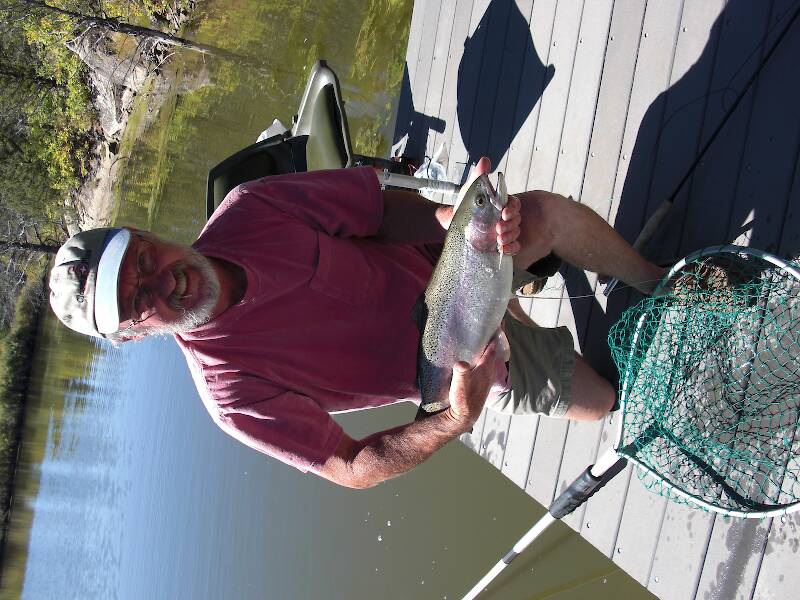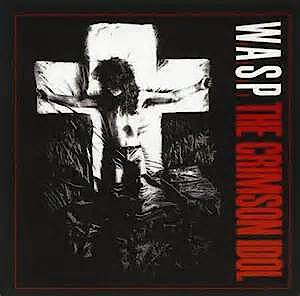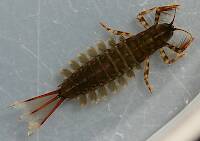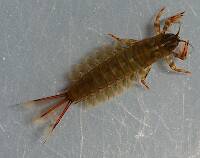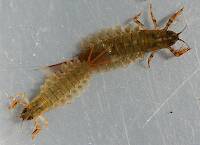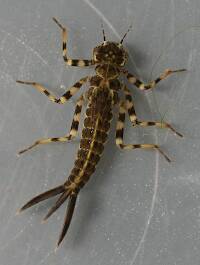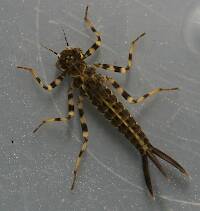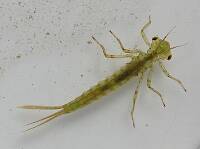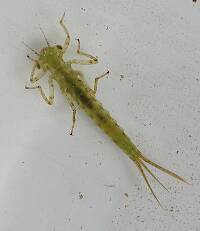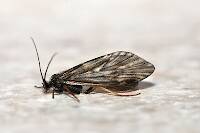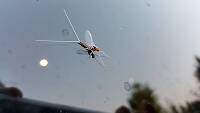
Hex Mayflies
Hexagenia limbata
The famous nocturnal Hex hatch of the Midwest (and a few other lucky locations) stirs to the surface mythically large brown trout that only touch streamers for the rest of the year.
Featured on the forum
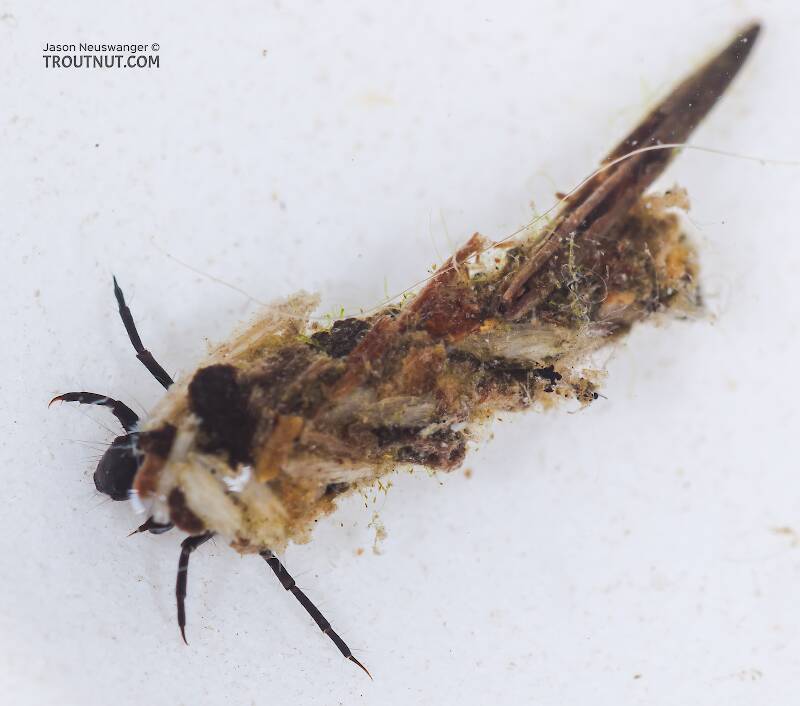
This seems to be a young larva of Limnephilus. Although not clear in the picture, several ventral abdominal segments have chloride epithelia.

Troutnut is a project started in 2003 by salmonid ecologist Jason "Troutnut" Neuswanger to help anglers and
fly tyers unabashedly embrace the entomological side of the sport. Learn more about Troutnut or
support the project for an enhanced experience here.
Fishmutt on Jun 24, 2013June 24th, 2013, 6:03 am EDT
Last Saturday I played a young rainbow that was partly silver & partly dark green. I've encountered both colorations B4 but not a fish with a mix of the dark & silver. Is this a dietary influence, a morph change or an indicator of a health problem?
Fishmutt
Fishmutt
PaulRoberts on Jun 24, 2013June 24th, 2013, 6:59 am EDT
Most likely has to do with ambient lighting the fish was in.
Sayfu
Posts: 560
Posts: 560
Sayfu on Jun 24, 2013June 24th, 2013, 7:04 am EDT
Partly dark green on top, and silver on the bottom? Natural camo if that is the case.
Fishmutt on Jun 24, 2013June 24th, 2013, 9:56 am EDT
Actually the colors were sharpley divided but erratically around the girth.
Very pronounced. Looked kind of like a birthmark boundary.
Fishmutt
Very pronounced. Looked kind of like a birthmark boundary.
Fishmutt
MontanaMike on Jul 10, 2013July 10th, 2013, 8:55 pm EDT
Rainbows come in all kinds of different patterns. Ive taken photos of almost all my decent sized fish and its amazing to see the difference. Time of year, mating, water color, etc. all have an effect on their color IMO
Adirman on Jul 11, 2013July 11th, 2013, 2:41 am EDT
I agree. Ive caught rainbows with the silvery coloration dominant and pronounced as well as the variation where it looks more greenish and the iridescent stripe is kind of more cutthroaty looking because its a deeper more pronounced color as well.
Entoman on Jul 12, 2013July 12th, 2013, 9:21 am EDT
Individual and environmental differences are strong influences on appearance but genetics also comes into play. Various strains have developed distinct looks while adapting to their environments over time. Native races in their native habitat tend to be more uniform in their appearance. Introducing multiple cultured strains into non-native environments produces a lot of variation as some specimens will display traits of different parentage more strongly. The look FM is describing (spotted dark green back, plain silver without spots below the median) is typical of the Kamloop strain (lake dwelling rainbows from BC) and most steelhead races. The McCloud race (used by the culturists that started it all) are heavily spotted below the median and are more brightly colored.
"It's not that I find fishing so important, it's just that I find all other endeavors of Man equally unimportant... And not nearly as much fun!" Robert Traver, Anatomy of a Fisherman
Quick Reply
Related Discussions
Topic
Replies
Last Reply
Acroneuria specimen moved from genus to species level
In Acroneuria carolinensis Stonefly Nymph by Entoman
In Acroneuria carolinensis Stonefly Nymph by Entoman
0
Mar 11, 2012
by Entoman
by Entoman
17
Jun 2, 2008
by Woodster
by Woodster


